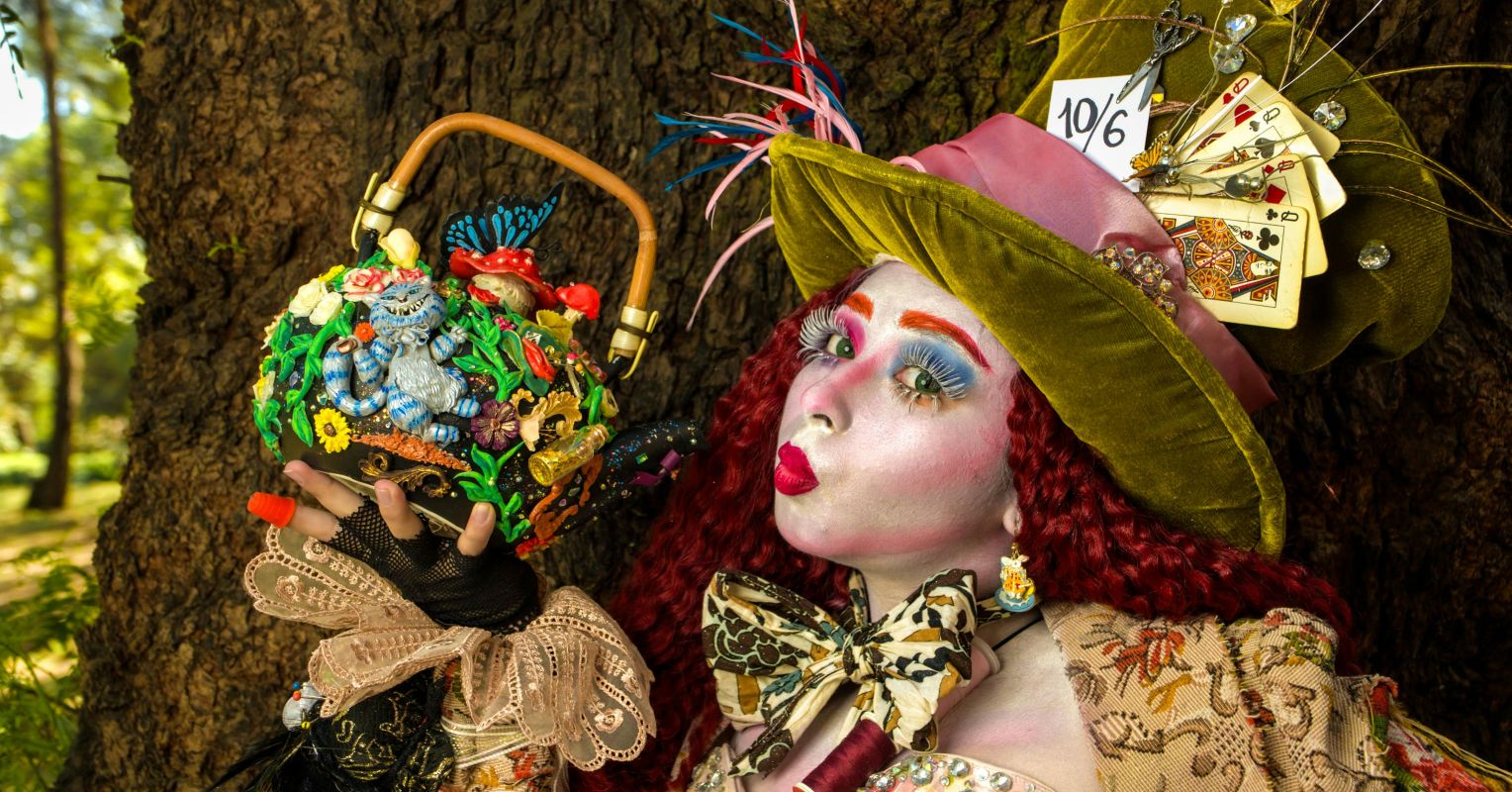Curiosity motivates us to find new understanding. It fuels learning and helps us persevere to discover new insights about how things work and (most of the time) how we can make things work better. In relationships, curiosity is the engine of friendship and collaboration; interviews and conversations are exercises in trying to satisfy our curiosity, which can sometimes feel insatiable.
To explore whether curiosity might differ among people based on factors like age, the neighborhood we grew up in, or our political views, the Greater Good Science Center developed a curiosity quiz and invited readers to take it. The quiz adapted questions from two published surveys: the Five-Dimensional Curiosity Scale developed by Todd Kashdan and his colleagues, and the Social Curiosity Scale developed by Brita Renner. Rather than being a diagnostic, the quiz is an opportunity to reflect on what curiosity means and where you might land on a quick, informal assessment.
Here’s what we learned from exploring the patterns of curiosity scores from just under 10,000 visitors to the GGSC curiosity quiz.
Curiosity plateaus after your 30s
X

Quiz-takers who were under 18 years old had the lowest curiosity, followed by people in their 20s, whose scores were 4% higher—a small but statistically reliable increase. After that, people in their 30s went up in curiosity slightly by 3%. But scores for quiz-takers beyond their 30s plateaued, staying the same among people in their 40s, 50s, 60s, and 70+.
This pattern likely echoes the average person’s pace of learning vs. knowing in life. In the majority of professional sectors, people have probably completed their training by their late 20s. Moving into their 30s and beyond, they shift from learning new material to applying their existing knowledge, skills, and expertise to do what needs to be done.
Some might consider the fact that curiosity does not decline to be a good sign (I agree!), but would it benefit our well-being to keep it inching up even throughout adulthood? Should we let increasing curiosity, a hallmark of childhood and early adulthood, taper off? Evidence suggests that strengthening your curiosity muscle can benefit your well-being by increasing your motivation to seek novel, uplifting experiences, deepen relationships, and find innovative ways to improve upon the status quo—and studies report that curious people live longer, healthier lives.

More education, more curiosity
In some ways, curiosity appears to have a self-fulfilling quality: The more a person channels it to learn, the more curious they are. Quiz-takers who did not finish high school scored the lowest in curiosity, followed by people who had earned a high school diploma (3% higher). People who had earned professional certificates or bachelor’s degrees were slightly higher in curiosity than high school graduates (3.4%). The highest curiosity was among people who reported completing some graduate study or a graduate or professional degree (3% higher in turn).
Is the higher curiosity among people with more education a function of age? A secondary analysis suggests not. That is, removing age from the equation, people with higher education are still more curious.
What we don’t know is whether education is the reason people are more curious—as Albert Einstein reportedly said, “The more I learn, the more I realized how much I don’t know”—or if more curious people seek out more education. More research is needed to explore that question.

Women are slightly more curious than men, and people who prefer to self-identify their gender
Women quiz-takers scored slightly higher in curiosity than men (2% higher), and compared to people who selected “I prefer to self-identify” for their gender (3% higher). Curiosity scores from gender non-binary people were not different from any other group’s, which might be a function of the small number of people identifying that way.
These findings echo a common finding on GGSC quizzes: Women score higher than men, and the pattern of scores for self-identifying and non-binary folks is difficult to interpret because there are fewer responses. It’s possible that these differences reflect gender-based cultural norms that prompt women to agree with statements on quizzes, questionnaires, and surveys, particularly those regarding psychological experiences or issues related to Mental health.
There is little scientific explanation for gender-based differences in curiosity scores or any evolved or biological sex difference in curiosity. While some studies of sensation seeking (a trait that may be related to curiosity?) report higher levels among men, even that work has been unsuccessful at disentangling social and cultural factors from any possible innate or biological influence.

Curiosity scores differ slightly by ethnic background
Quiz-takers who were Caucasian, Native American, and multiethnic scored higher in curiosity than people from other ethnic backgrounds, including African and African American, Asian and Asian American, Latino, and Middle Eastern. The biggest difference in curiosity scores related to ethnic background, between Caucasian and Middle Eastern respondents, was 5%.
This pattern of differences should not be taken to represent any group’s potential for or even overall degree of curiosity. Because this quiz is informal, and people come to it voluntarily, every response is from someone who is at least somewhat familiar or connected with the GGSC. This means that our findings are not reflective of the general population.
Another challenge to making meaning from ethnicity-based differences in curiosity scores is that the questions themselves—like “When talking with someone with strong feelings (e.g., excited or upset), I want to understand why”—might be interpreted differently by people based on their sociocultural background, and evoke responses that have little to do with curiosity. Further research using a culturally adapted survey of a randomly selected and diverse population would shed more useful light on this question.

Curiosity doesn’t vary by neighborhood
There was no relationship between the type of neighborhood that people lived in and their curiosity scores. Whether living in rural or suburban areas, small or big cities, people scored around 3.6 in curiosity on a scale of 1 to 5.
While it might be tempting to assume that more cosmopolitan, big-city environments with lots of activity and fast-paced urban energy would drive up curiosity (so much to see, so much to do, so little time), these scores debunk that notion. Instead, this pattern raises the question of whether unscheduled time and open space, which are typically more available in rural settings, might be formative to curiosity.

People with very low income score lower on curiosity
The only link between curiosity quiz scores and annual household income was for people who earned less than $25,000 per year, who had lower curiosity scores than all other income brackets. Earning anything above $25,000 per year had little impact on GGSC readers’ curiosity.
While the link between very low income and lower curiosity is partly driven by age and education (in other words, people under 18 years old who have not completed high school are more likely to earn less than $25,000 per year and also score lower in curiosity), that is not the only driver. One way to interpret this is that financial strain and distress displace opportunities for curiosity. Being in persistent survival mode narrows our focus and behavior toward addressing immediate threats and demands, which snuffs out curiosity.

People with more liberal political views score higher in curiosity
People who rated themselves as liberal and very liberal were higher in curiosity than people who identified as moderate, conservative, or very conservative. The difference in curiosity scores between the “very liberal” and “very conservative” groups was 9%. In part, this pattern is unsurprising given that conservatism often prioritizes traditional values and maintaining systems and policies that have worked well historically. Curiosity about novel approaches or how to implement changes that might involve unforeseen risks might be more aligned with liberal ideology.
It’s also possible that the very language of the questions on the GGSC’s curiosity quiz is more aligned with a liberal orientation—for example, “When someone holds a belief or opinion that I’m strongly opposed to, I’m interested in understanding why”—and, thus, easier for a person with liberal politics to endorse.
Another possibility is that this pattern of curiosity scores reflects a bias in the composition of people who completed the quiz; there were five times more people who identified as liberal than as conservative. Was the quiz simply more popular and appealing to liberal people than conservative people? We would need to conduct a more careful study, including interviews with more conservative quiz-takers, to learn more about this.

The link between questioning our purpose in life and curiosity is murky
While developing the GGSC curiosity quiz, the creators threw in a wildcard question, “I often question my purpose in life,” to explore how it related to curiosity scores. The pattern of responses offers a cautionary tale about the importance of using clear questions in survey data. At face value, the statement could mean multiple things: “Yes, I am very curious about my purpose and engage in self-reflective inquiry about it often,” or “Yes, I feel unclear about my purpose and question it with self-critical ambivalence and a low sense of self-worth.”
Questioning our purpose in life showed a confusing relationship to curiosity scores. Scores were lowest among the “Strongly disagree” group, then increased for “Disagree,” then went back down for “Neither disagree nor agree,” then increased again for “Agree” and “Strongly agree.” This pattern suggests that responses to the question were inconsistent, and there is little we can learn by trying to link them to curiosity scores.
While curiosity is often called childlike, evidence increasingly suggests that it is worth holding on to throughout adulthood. Humans are both innately motivated to explore and discover new things, and equipped to solidify understanding to quickly predict and make efficient decisions. Both knowing what to do, and finding novel ways to think about situations and solve challenges, supports our Emotional resilience and tenacity in pursuing goals. Forming meaningful and mutually supportive social bonds (central to lifelong well-being) hinges on both familiarity and earned trust, and continuing to learn about one another in dynamic real-time interactions. The agility, adaptability, and discovery involved in these basic human needs are spurred by curiosity, which—if you are curious—you can readily strengthen.













